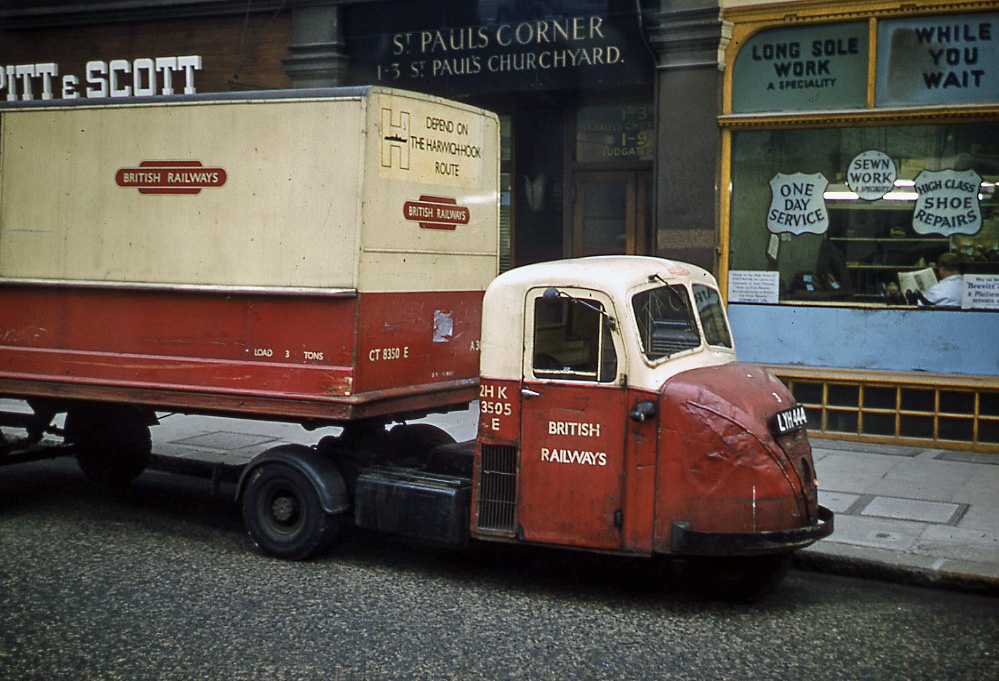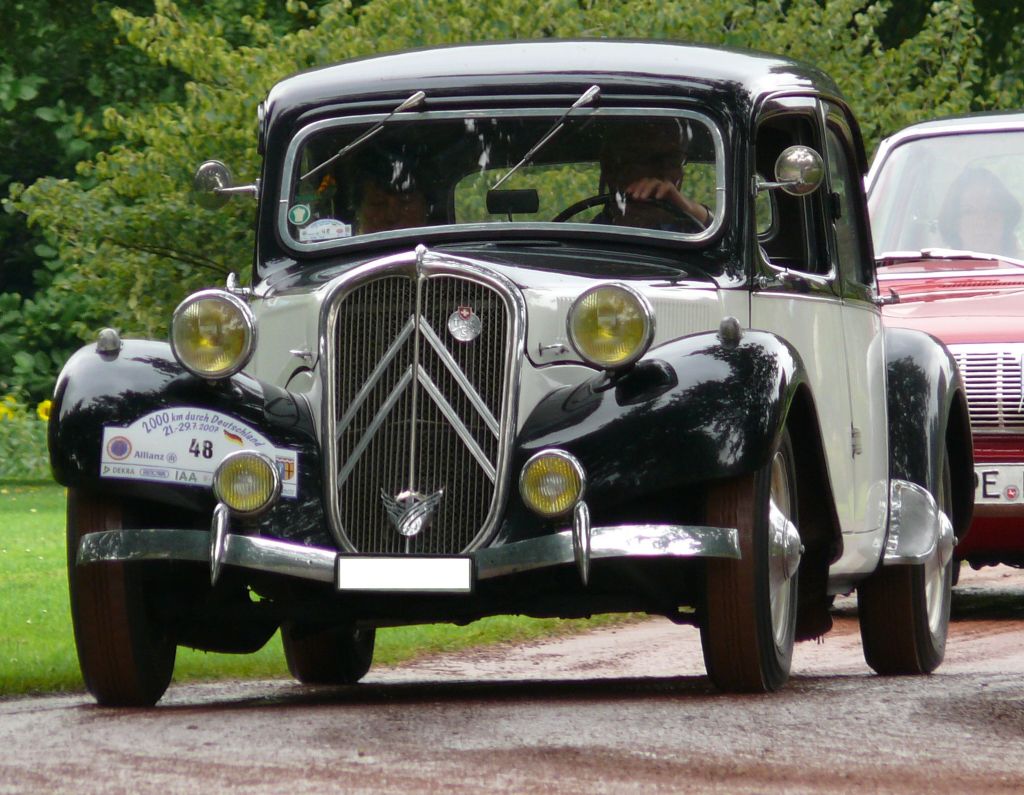|
Scammell Lorries
Scammell Lorries Limited was a British manufacturer of trucks, particularly specialist and military off-highway vehicles, between 1921 and 1988. History Scammell started as a late- Victorian period wheelwright and coach-building business, G Scammell & Nephew Ltd in Spitalfields, London. George Scammell, the founder, was joined by his nephew Richard and Richard's sons Alfred and James. By the early 1900s, the firm had become financially stable, providing maintenance to customers of Foden steam wagons. One such customer, Edward Rudd, had imported a Knox Automobile tractor from the United States, and impressed with its low weight/high hauling power had asked Scammell if they could make a similar model of their own. However, the outbreak of World War I in 1914 stopped the project and presented itself as a turning point in road transport history. Mechanical transport was seen to work, proving its vast potential beyond doubt to forward-thinking companies such as Scammell. George ... [...More Info...] [...Related Items...] OR: [Wikipedia] [Google] [Baidu] |
Alvis Unipower
Universal Power Drives was a British truck manufacturer which branded its trucks with the ''Unipower'' marque. History ''Universal Power Drives'' was founded in 1934 with a factory in Perivale and its head office in Aldwych, London. During the 1930s, 40s and 50s it specialised in producing 4x4 forestry logging trucks. In 1972 it launched the 4x4 Unipower Invader suited to fire-fighting and construction use. Todd Motors in New Zealand produced the TS3 Commer Truck, in the early 1970s, with a Unipower tandem drive assembly as a factory option. In January 1966 they exhibited a sports car, the Unipower GT at the Racing Car Show. Another car they produced was the Quasar-Unipower which was built in 1967 and 1968. In 1977 the company was acquired by Caterpillar Inc and production was moved to Thames Ditton, Surrey. In 1988 the company started a new enterprise in Watford to provide continuity of support for Scammell trucks following the closure of the Leyland DAF (formerly Brit ... [...More Info...] [...Related Items...] OR: [Wikipedia] [Google] [Baidu] |
Liverpool
Liverpool is a City status in the United Kingdom, city and metropolitan borough in Merseyside, England. With a population of in 2019, it is the List of English districts by population, 10th largest English district by population and its ESPON metropolitan areas in the United Kingdom, metropolitan area is the fifth largest in the United Kingdom, with a population of 2.24 million. On the eastern side of the Mersey Estuary, Liverpool historically lay within the ancient Hundred (county division), hundred of West Derby (hundred), West Derby in the county of Lancashire. It became a Borough status in the United Kingdom, borough in 1207, a City status in the United Kingdom, city in 1880, and a county borough independent of the newly-created Lancashire County Council in 1889. Its Port of Liverpool, growth as a major port was paralleled by the expansion of the city throughout the Industrial Revolution. Along with general cargo, freight, and raw materials such as coal and cotton ... [...More Info...] [...Related Items...] OR: [Wikipedia] [Google] [Baidu] |
Scammell Ad 1948
Scammell Lorries Limited was a British manufacturer of trucks, particularly specialist and military off-highway vehicles, between 1921 and 1988. History Scammell started as a late- Victorian period wheelwright and coach-building business, G Scammell & Nephew Ltd in Spitalfields, London. George Scammell, the founder, was joined by his nephew Richard and Richard's sons Alfred and James. By the early 1900s, the firm had become financially stable, providing maintenance to customers of Foden steam wagons. One such customer, Edward Rudd, had imported a Knox Automobile tractor from the United States, and impressed with its low weight/high hauling power had asked Scammell if they could make a similar model of their own. However, the outbreak of World War I in 1914 stopped the project and presented itself as a turning point in road transport history. Mechanical transport was seen to work, proving its vast potential beyond doubt to forward-thinking companies such as Scammell. Geor ... [...More Info...] [...Related Items...] OR: [Wikipedia] [Google] [Baidu] |
Perkins Engines
Perkins Engines Company Limited, a subsidiary of Caterpillar Inc since 1998, is primarily a diesel engine manufacturer for several markets including agricultural, construction, material handling, power generation, and industrial. It was established in Peterborough, England in 1932. Over the years Perkins has expanded its engine catalogue, producing thousands of different engine specifications including diesel and petrol engines. History High-speed diesel engines F. Perkins Limited, established on 7 June 1932, was founded by Frank Perkins and Charles Wallace Chapman, in Queen Street, Peterborough, to design and manufacture high-speed diesel engines.F. PERKINS LIMITED (Incorporated under the Companies Act, 1929). ''The Times'', 23 July 1951; pg. 9; Issue 52060 Chapman was the design engineer (technical director) and company secretary and had a ten percent shareholding in the company. He continued working at F. Perkins Limited for more than a decade before re-joining the Roy ... [...More Info...] [...Related Items...] OR: [Wikipedia] [Google] [Baidu] |
Diesel Engine
The diesel engine, named after Rudolf Diesel, is an internal combustion engine in which ignition of the fuel is caused by the elevated temperature of the air in the cylinder due to mechanical compression; thus, the diesel engine is a so-called compression-ignition engine (CI engine). This contrasts with engines using spark plug-ignition of the air-fuel mixture, such as a petrol engine ( gasoline engine) or a gas engine (using a gaseous fuel like natural gas or liquefied petroleum gas). Diesel engines work by compressing only air, or air plus residual combustion gases from the exhaust (known as exhaust gas recirculation (EGR)). Air is inducted into the chamber during the intake stroke, and compressed during the compression stroke. This increases the air temperature inside the cylinder to such a high degree that atomised diesel fuel injected into the combustion chamber ignites. With the fuel being injected into the air just before combustion, the dispersion of the fuel is ... [...More Info...] [...Related Items...] OR: [Wikipedia] [Google] [Baidu] |
Scammell Scarab
The Scammell Scarab is a British 3-wheeled tractor unit produced by the truck manufacturer Scammell between 1948 and 1967. These vehicles are often known as "Snub-nose Trucks" or "Snub-nose Lorries" because of the round hood in front of the cab. Development and production history The Scammell Scarab was the successor to the Scammell Mechanical Horse and production began in 1948. Its name is commonly believed to be derived from the rounded bonnet that resembled the elytron, elytra (wing covers) of a Scarabaeidae, Scarab beetle, but the name really comes from a more conventional source. It was a portmanteau of Scammell and the Arab horse which the Mechanical Horse replaced in British Railways usage. The official Scammell Lorries advertisement film makes reference to this. It was extremely popular with British Railways and other companies which made deliveries within built-up areas. The Ministry of Defence (United Kingdom), Ministry of Defence also used the Scarab and trailers for ... [...More Info...] [...Related Items...] OR: [Wikipedia] [Google] [Baidu] |
FAR (Tracteurs FAR)
FAR was a French truck manufacturer, affiliated with Chenard-Walcker. It was founded in 1919 and ceased manufacture in 1970. History André Lagache, winner of the inaugural 24 Hours of Le Mans in 1923 driving a Chenard Walcker, was one of the founders of Tracteurs FAR and was denoted by the "A" in FAR. Products Among the company's products was the 'Pony Mécanique', developed by the Napier motor company and improved in design by Oliver Danson North. It was a three-wheeled articulated tractor unit fitted with automatic coupling gear to enable rapid change of trailers. These vehicles were built under licence from UK company Scammell (Scammell ''Mechanical Horse'') from 1937 to 1970, but the FAR production used the Citroën Traction Avant The Citroën Traction Avant () is the world’s first unibody front-wheel-drive car. A range of mostly 4-door saloons and executive cars, were made with four or six-cylinder engines, produced by the French manufacturer Citroën from 1934 t ... [...More Info...] [...Related Items...] OR: [Wikipedia] [Google] [Baidu] |
Citroën Traction Avant
The Citroën Traction Avant () is the world’s first unibody front-wheel-drive car. A range of mostly 4-door saloons and executive cars, were made with four or six-cylinder engines, produced by the French manufacturer Citroën from 1934 to 1957. Approximately 760,000 units were produced. Whilst front-wheel drive and independent suspension had been established in the mass market by Auto Union and subsequently others some years before, the Traction Avant pioneered mass-production of a crash resistant, unitary, monocoque body. Additionally, the car was also an early adopter of rack and pinion steering. Although the car's name emphasized its front-wheel drive power delivery ("Traction Avant" literally means “front traction”), the car stood out at least as much by its much lower profile and stance – made possible by the absence of a separate chassis under the car's unitary body – sharply distinguishing it visually from its contemporaries. History The Traction Avant, ... [...More Info...] [...Related Items...] OR: [Wikipedia] [Google] [Baidu] |
Karrier
Karrier was a British marque of motorised municipal appliances and light commercial vehicles and trolley buses manufactured at Karrier Works, Huddersfield, West Yorkshire, by Clayton and Co., Huddersfield, Limited. They began making Karrier motor vehicles in 1908 in Queen Street South, Huddersfield. In 1920, H.F. Clayton sold Clayton and Co's Huddersfield business into public listed company Karrier Motors while keeping their Penistone operation separate. Mechanical and electrical engineers Clayton & Co Penistone, remain active in 2020 as Clayton Penistone Group. Karrier produced buses as well as their other municipal vehicles and in latter years, especially during the Second World War, Trolleybuses, notably their Karrier 'W' model. In 1934 Karrier became part of the Rootes Group where it retained its brand identity though the business was operated as part of Rootes's Commer commercial vehicle operation. The Karrier name began to disappear from products when Chrysler bought Roote ... [...More Info...] [...Related Items...] OR: [Wikipedia] [Google] [Baidu] |
Petrol
Gasoline (; ) or petrol (; ) (see ) is a transparent, petroleum-derived flammable liquid that is used primarily as a fuel in most spark-ignited internal combustion engines (also known as petrol engines). It consists mostly of organic compounds obtained by the fractional distillation of petroleum, enhanced with a variety of additives. On average, U.S. refineries produce, from a barrel of crude oil, about 19 to 20 gallons of gasoline; 11 to 13 gallons of distillate fuel (most of which is sold as diesel fuel); and 3 to 4 gallons of jet fuel. The product ratio depends on the processing in an oil refinery and the crude oil assay. A barrel of oil is defined as holding 42 US gallons, which is about 159 liters or 35 imperial gallons. The characteristic of a particular gasoline blend to resist igniting too early (which causes knocking and reduces efficiency in reciprocating engines) is measured by its octane rating, which is produced in several grades. Tetraethyl lead ... [...More Info...] [...Related Items...] OR: [Wikipedia] [Google] [Baidu] |
Side-valve
A flathead engine, also known as a sidevalve engine''American Rodder'', 6/94, pp.45 & 93. or valve-in-block engine is an internal combustion engine with its poppet valves contained within the engine block, instead of in the cylinder head, as in an overhead valve engine. Flatheads were widely used internationally by automobile manufacturers from the late 1890s until the mid-1950s but were replaced by more efficient overhead valve and overhead camshaft engines. They are currently experiencing a revival in low-revving aero-engines such as the D-Motor. The side-valve design The valve gear comprises a camshaft sited low in the cylinder block which operates the poppet valves via tappets and short pushrods (or sometimes with no pushrods at all). The flathead system obviates the need for further valvetrain components such as lengthy pushrods, rocker arms, overhead valves or overhead camshafts. The sidevalves are typically adjacent, sited on one side of the cylinder(s), though som ... [...More Info...] [...Related Items...] OR: [Wikipedia] [Google] [Baidu] |



.jpg)






.jpg)